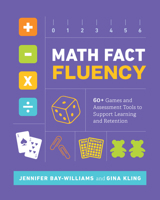Alexa: 2018 Essential User Guide for Amazon Echo and Alexa (Amazon Echo, Echo Dot, Amazon Echo Show, Amazon Spot, Alexa, Amaz
Select Format
Select Condition 
You Might Also Enjoy
Book Overview
Alexa 2018 Essential User Guide for Amazon Echo and Alexa (Amazon Echo, Echo Dot, Amazon Echo Show, Amazon Spot, Alexa, Amazon Alexa, Amazon Echo Manual, Alexa Manual) Amazon Echo is a speaker, voice assistant, smart home device, music player, math genius, news reporter, and so much more. No actual words can really describe what this new device is. It was created by Amazon, and has been a hot topic since July 2015. It was first launched in late 2014, but it wasn't available to the public until late June of 2015. And since then, the smart device has been selling like funnel cakes at a county fair. Here are a list of topics that will be discussed throughout this book. Here is a preview of what you'll learn: Background knowledge of the Amazon Echo Everything the Echo can do The most Common Alexa Problems and How to Fix them The Limitations of Alexa Alexa Tips and Tricks Having background knowledge about the Echo will enable its future owners of how it works and how they can master it faster than most. But the Echo is probably one of the least complicated devices that have been invented on this Earth, especially when considering everything the Echo can do for its owners. Download your copy of " Alexa " by scrolling up and clicking "Buy Now With 1-Click" button.
Tags: Alexa, Amazon Echo, Amazon Echo Look, Amazon Echo Show, Amazon Echo Dot, Amazon Echo Connect, Amazon Echo Spot, Amazon Fire, Alexa second Generation, Amazon Alexa, Amazon Echo Manual, Alexa Manual, Personal Assistant, User guide, Echo Look, Echo Show, Hands-Free Camera, Style Assistant, user manual, user guide, amazon echo benefits, voice command device, amazon device, tips and tricks, troubleshooting Issues, home devices, the 2017 updated user guide, alexa kit, Alexa Skills Kit, digital devices, smart device, multifunctional device, beginners guide, main functions, personal control, time management, ULTIMATE Guide for Beginners, ULTIMATE Guide, Beginners Guide, Alexa Voice Service.
Tags: Alexa, Amazon Echo, Amazon Echo Look, Amazon Echo Show, Amazon Echo Dot, Amazon Echo Connect, Amazon Echo Spot, Amazon Fire, Alexa second Generation, Amazon Alexa, Amazon Echo Manual, Alexa Manual, Personal Assistant, User guide, Echo Look, Echo Show, Hands-Free Camera, Style Assistant, user manual, user guide, amazon echo benefits, voice command device, amazon device, tips and tricks, troubleshooting Issues, home devices, the 2017 updated user guide, alexa kit, Alexa Skills Kit, digital devices, smart device, multifunctional device, beginners guide, main functions, personal control, time management, ULTIMATE Guide for Beginners, ULTIMATE Guide, Beginners Guide, Alexa Voice Service.
Format:Paperback
Language:English
ISBN:1984049259
ISBN13:9781984049254
Release Date:January 2018
Publisher:Createspace Independent Publishing Platform
Length:138 Pages
Weight:0.50 lbs.
Dimensions:0.3" x 6.0" x 9.0"
More by Steve Jacobs
Customer Reviews
1 customer rating | 1 review
There are currently no reviews. Be the first to review this work.
























































